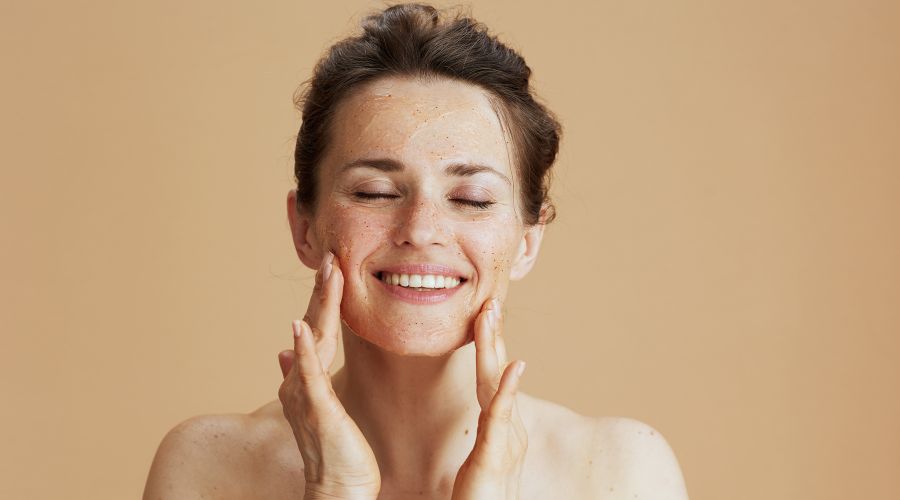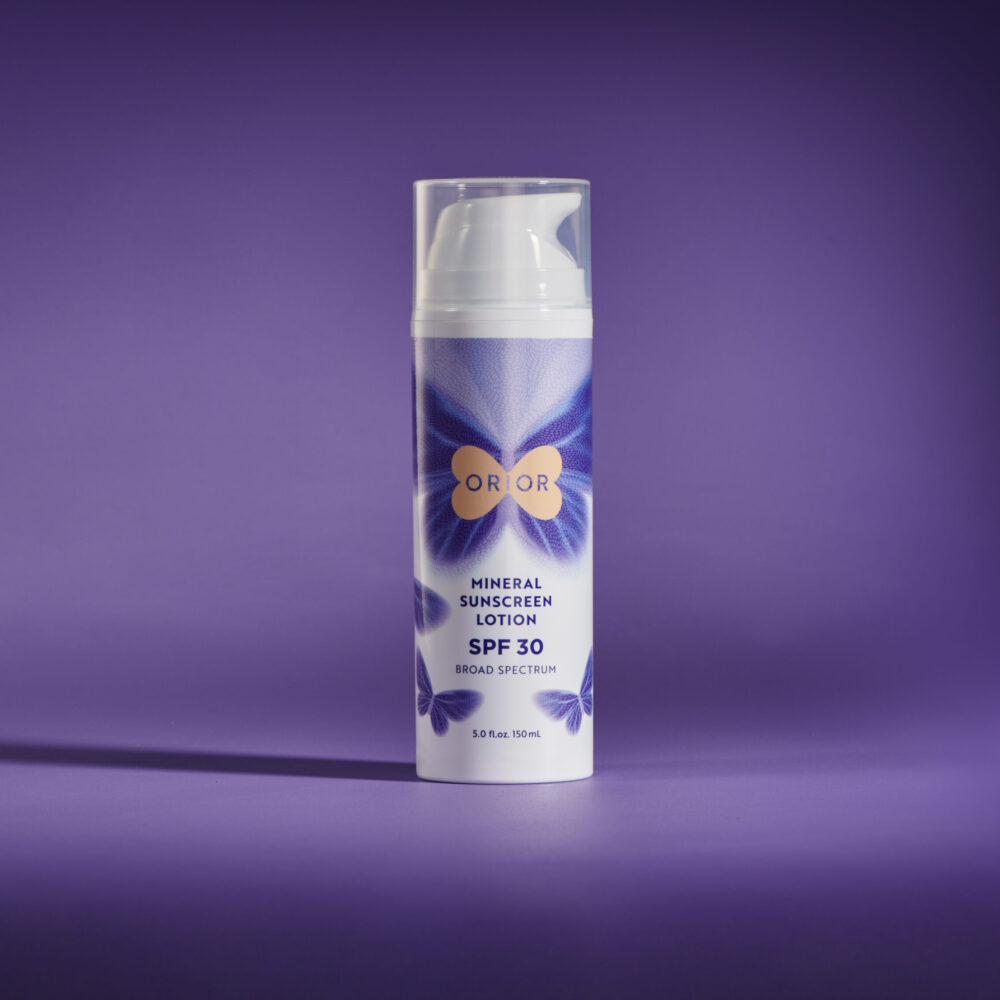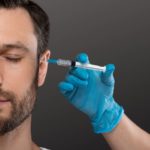When you are gearing up to spend some time outside, hopefully, you are already in the habit of reaching for sunscreen to protect your skin from overexposure to harmful UV rays. If you are like most people, you instinctively reach for the one labeled with a high SPF, thinking that the higher the SPF, the better protection it provides.
But what do those SPF numbers really mean? You may be wondering: Is it better to use SPF 30 or 50? Or maybe you want to know if SPF 30 is strong enough for a beach?
Today we are going to talk about SPF, what it means, how it is determined, tell you the difference between SPF 30 vs 50, and provide some helpful tips on protecting your skin from sun exposure.
-
Sunscreen
Daily SPF 30 Sunscreen
$45.00 – $78.00 Select options This product has multiple variants. The options may be chosen on the product page
There Are Two Types Of Skin Damaging UV Rays
The sun emits two types of UV radiation, UVB rays and UVA rays, which both can do significant damage to your skin.
UVA Rays
95% of the UV rays that reach the Earth’s surface are UVA radiation and penetrate much deeper into the layers of your skin than UVB rays and cause damage to collagen and elastin. These rays are the same ones used in commercial tanning beds, can go through glass (like your car windows), and are the biggest contributor to visible signs of aging like wrinkles and pigmentation issues. UVA rays work in tandem with UVB rays to cause skin cancer, so your skin needs to be protected from both.
UVB Rays
The other 5% of the sun’s UV rays are UVB rays, which do not penetrate the skin as deeply as the UVA rays but can cause significant damage to the top layers of your skin. Aside from causing burns, it can alter the DNA in your skin cells and cause mutations that lead to melanoma and other skin cancers. UV rays can also cause damage to the proteins in the lens of your eyes and result in cataracts.
SPF numbers only apply to UVB rays, so keep that in mind next time you purchase sunscreen. Always choose one that says “broad spectrum,” which means the sunscreen also protects against UVA rays.
What Do SPF Numbers Mean?
The initials SPF stand for Sun Protection Factor. The number next to it tells you how effectively the sunscreen will prevent sunburn from UVB rays but not the length of time you can stay in the sun.
With so many options to choose from, you might wonder what the difference is between SPF 30 vs SPF 50 and whether higher SPF numbers really make a difference.
For example, comparing SPF 30 vs 50 does not mean that you can stay in the sun for 30 minutes compared to 50 minutes. A rating of SPF 30 means your untanned skin can stay in the sun up to 30 times longer without beginning to burn after applying the sunscreen vs using no sunscreen at all. An SPF of 50 equates to 50 times longer, but SPF numbers above 50 make a minimal difference.
Here is a general breakdown of SPF numbers and how well they shield your skin from harmful UVB rays.
Chart: SPF Strengths And The Percentage Of UVB Rays They Block
| SPF Strength | Percentage Of UVB Rays Blocked |
|---|---|
| 15 | 93% |
| 30 | 97% |
| 50 | 98% |
| 70 | 98.6% |
| 100 | 99% |
How Are SPF Numbers Determined?
Tests are conducted on volunteers in a lab setting to determine how long their untanned skin can be exposed to artificial UVB rays from a UVB lamp. Usually, the buttocks are the chosen location for testing, as they are usually the most untouched by the sun.
The sunscreen is generously applied to the skin, which is then exposed to UVB rays, and the researchers measure how much time elapses before the skin develops a minimal burn with the sunscreen versus the skin without the sunscreen.
Experts tell us that even though we know what SPF was assigned to a particular sunscreen, it is hard to translate a laboratory test to real-life usage because of the amount of sunscreen used, how much was applied, and the strength of the UVB lamps compared to the intensity of the actual sun can be quite different.
Using a higher SPF sunscreen can offer a little more protection, but it may also provide a false sense of security in how long you can wait before reapplying.
Sunscreen Is Not Just For Summer
It wasn’t until the late 1970s that scientists discovered that UVB rays were harmful to the skin and a major contributor to skin cancer. It wasn’t until the 1990s that protection from UVA rays began to be added to sunscreen as well. This development was prompted by the findings of studies completed in Australia that reported that people were still developing skin cancer despite their strict use of UVB sunscreen.
This brings us to where we are today and may be one of the reasons why many individuals brought up by Gen X and Millennials still do not fully understand sunscreen and how it works. Their parents either didn’t worry about sun damage or they believed it to be a product meant to be used in the summer or when you are on vacation at the beach.
It is true that the sun’s rays are more intense and more damaging during the summer months, but they are harmful all year long. UV rays can still damage your skin on the cloudiest days. It is important to use sunscreen daily to protect your skin and prevent skin cancer.
Additionally, according to the National Weather Service, ultraviolet radiation becomes dramatically worse when the sun experiences high sunspot activity. The next large sunspot activity of 115 sunspots is predicted to occur in July 2025, so it might be time to stock up on sunscreen.
Tips For Staying Protected In The Sun
- Choose a broad-spectrum sunscreen that is water-resistant (there is no such thing as waterproof sunscreen).
- Apply a generous amount of sunscreen and allow at least 15 minutes to penetrate the skin. Both lotion and spray sunscreen have pros and cons, but lotion is great to use before you leave the house, and the convenience of applying spray makes staying protected easier while you are out and about, especially at a sandy beach.
- Regardless of the SFP level, you should reapply sunscreen every two hours or more if you are in and out of the water, towel drying yourself, or sweating.
- Make sure your sunscreen is still good because it can lose its effectiveness when it is past the expiration date, so check the label. It usually lasts at least two years, sometimes three depending on the type of sunscreen.
- Apply sunscreen to every part of your body that will not be covered.
- Stay covered up as much as you can, wear a hat, wear sun-protective clothing, sit in the shade, wear sunglasses, and avoid sun exposure between the hours of 10 and 4 when the sun’s rays are at their peak.
- The best sunscreen for you is the one you are going to use consistently, so choose one that you like best as long as it meets all the safety requirements.
What Can Be Done For Skin With Sun Damage?
The skin on our faces can show signs of sun exposure before any other location on our bodies. We can begin to see fine lines, wrinkles, and areas where the texture or pigment is no longer even.
IBI Plastic Surgery & Med Spa in Atlanta, Georgia offers several treatments that can help correct sun damage and make your skin look healthier and more youthful. Some of the treatments that can help build new collagen and elastin include:
- Chemical peels;
- SylfirmX;
- Photofacial (light-based therapy);
- Microdermabrasion;
- Microneedling.
Contact IBI Plastic Surgery & Med Spa today to learn about the many treatments we offer to reverse the signs of sun damage and correct other cosmetic concerns you may have. Set up a consultation today and let us help you achieve your aesthetic goals!








